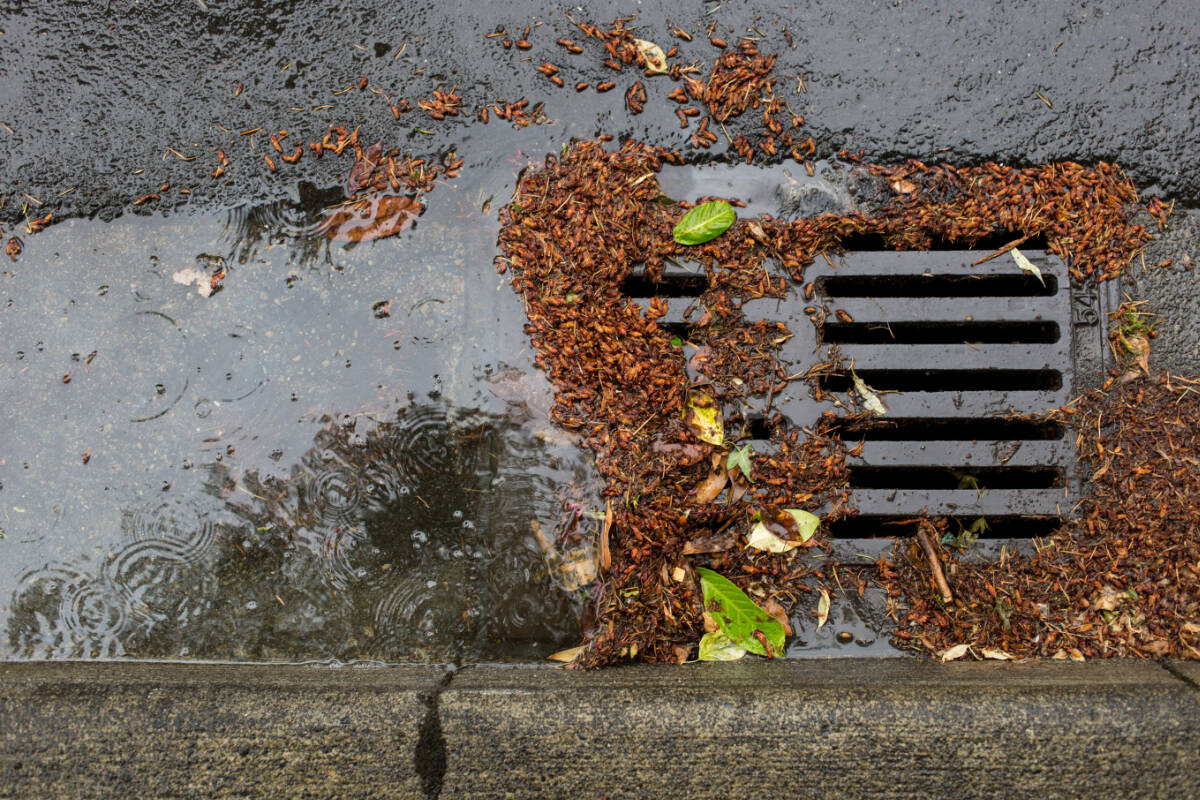Only rain down the drain: Keep catch basins clean and clear

When maintained and serviced properly, catch basins effectively reduce the amount of pollution leading to our waterways, beaches and marine shorelines.
Dirt, oils and other pollutants from our roads and parking lots can find their way into our waterways without proper care. To prevent that, catch basins are essential for both the collection of stormwater and pollutants, and protecting the environment.
Catch basins are chambers, usually with a grate, that collect stormwater before discharging to stormwater systems that lead to nearby water bodies, such as streams, wetlands or the ocean.
You’ll often spot catch basins in parking lots and on streets, where in addition to rainwater, they collect litter, car fluids, such as oils, gas and antifreeze, along with metals, sediments, leaves, sand and soil, allowing solids to settle and light materials to float.
When maintained and serviced properly, catch basins effectively reduce the amount of pollution leading to our waterways, beaches and marine shorelines. And, with a changing climate bringing more intense rainfall in the winter months, it’s essential to clean out catch basins to avoid flooding, damage to your business and others nearby, and to protect the environment.
Catch basin best management practices:
- Inspect Regularly: Sweep any leaves, garbage and debris away from the grate to ensure the flow of stormwater isn’t blocked. Inspect your catch basin every three months and check sediment and floating oil levels – this will help determine rate of accumulation so you can develop a proper cleaning schedule.
- Clean annually using a qualified company: Property owners and waste generators are responsible for cleaning catch basins – ideally at least once a year to help prevent flooding and damage.
It’s important to hire a qualified company to pump out your catch basin as they know where to properly dispose of the waste. The Capital Regional District’s Trucked Liquid Waste Service Provider Directory provides a list of companies.
- Be spill-ready: In a parking lot, spills of oil, antifreeze or other engine fluids must be cleaned up immediately to prevent these substances from entering the catch basin and stormwater. Prepare a spill response plan and keep a spill kit on hand in case of emergency spills.
- Install a green stormwater infrastructure system: Green stormwater infrastructure, such as a rain garden, helps slow, clean and store rainwater and is an an important tool that can help reduce the rainwater and pollution entering your catch basin, and reduce cleaning requirements.
You can learn more at www.crd.bc.ca/gsi.
